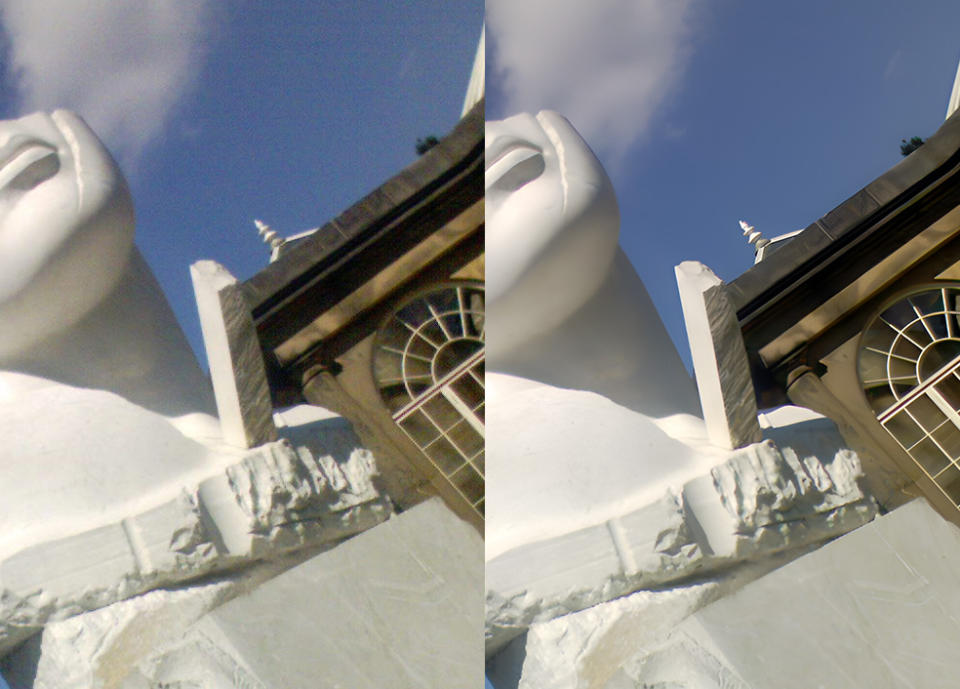Zoom and Enhance (kinda) go from fiction to fact with Picsart's AI image enhancer
"Can you enhance that?" the CSI detective asks a bespectacled computer nerd, pointing at a six-pixel area of CCTV footage that may or may not be a driver's license. Two seconds later, they have the perp's name, birthdate, address, shoe size, IQ, favorite color, list of allergies and Netflix viewing history. Entertaining, yes. Unreasonable and impossible, sure. But to photographers sitting on an old library of photos that leave something to be desired in the resolution and clarity front, it's a long-standing dream. Online photo editing tool Picsart today launched a new AI-powered image-enhancement tool to nudge dreams toward reality.
The tool is able to offer image enhancement and upscaling that improves the overall quality of an image and resolution for printing or sharing online. The company explains it uses advanced AI models to remove or blur pixelated effects, add pixels and sharpen and restore scenes and objects, including faces. Traditionally, this type of technology has been limited to expensive software with limited quality, but Picsart is putting a stake in the ground to offer this as a low-cost, easy-to-use tool.
“Even with the amazing advancement of camera technology, we still find that many images aren’t high quality enough to satisfy all creative needs,” said Humphrey Shi, chief scientist at Picsart and founder of Picsart AI Research, in a press release. “Now users can easily apply AI Enhance to any image and increase the quality and resolution in seconds, and we’re excited to provide this ability to not only our creator community but businesses using Picsart as well.”
The technology is available as part of Picsart’s API offering for businesses, which launched earlier this year. This feature is also rolling out in the Picsart iOS app in due course, which can improve or restore the quality of facial elements.
I gave the tool a try and discovered it works well with images that start out being pretty decent, but also occasionally ended up with some pretty . . . what shall we say, interesting results.
First an example of the tech working as it should — this is a photo taken back in 2006, with a Sony Ericsson K608i camera phone. It was one of the very early "high-quality" camera phones and shot reasonable resolution photographs. This one was 1280 x 1024 pixels. Picsart's AI upscaled it to 2560 x 2048, but more importantly, it did a really impressive job at stripping out a bunch of the digital noise:

Sony Ericsson K608i sample image. Image Credits: Haje Kamps
Let's take a closer look:

The original is on the left, and Picsart's upscaled and de-noised version is on the right. Image Credits: Haje Kamps
Pay close attention to the crispness of the lines in the window, the feature on the roof, the lack of noise in the sky, and the crisp clarity of the marble. Very impressive indeed.
I tried out Picsart's tech on a slew of old photos and was consistently impressed and surprised by the results. Here's another, also taken with the Sony Ericsson K608i camera — the sharpening and contrast looks a tiny bit on the creepy side, but the sharpness in Ashley's face and the crispness of the bottle's label is very impressive indeed.

Ashley Smithers, now CEO and founder of Amefist. Why there's a purple duck-billed platypus drinking beer in this photo has luckily been lost in the mists of time. Image Credits: Haje Kamps
The filter is a little overzealous on the sharpening for faces, presumably because it is trying to extrapolate what it knows faces are "supposed" to look like. I believe that it starts to look a little unrealistic; my face is sharp, yes, but the Apple logo and the text in the elevator behind my head is still blurry. It makes the photo dip its toes into the Uncanny Valley a bit too much for my liking. It's also a little curious that the second reflection of my face (in the mirror, over my shoulder) didn't get sharpened or enhanced.

Yours truly dressed up as Hitman, photographed using the original iPhone. Image Credits: Haje Kamps
Some of the photos I ran through the tool stayed essentially unchanged, and others mangled the faces of the people in the image beyond recognition, in extremely unflattering ways. Still, Picsart's tech is both impressive and fun to play with, and as its team points out, this is the first version of the tool, which will see further improvements over time. Ultimately, I'm just delighted to see some of my very old photos come to life again, even when they have awful noise, blur and scraping-the-bottom-of-the-barrel resolution.

 Yahoo Finance
Yahoo Finance 